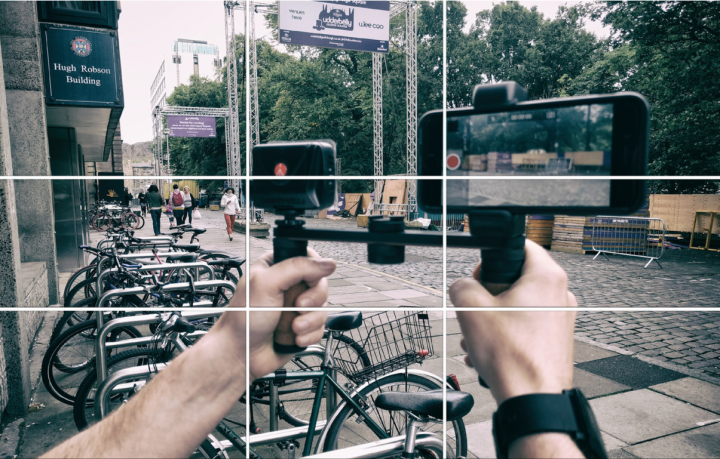Part two: framing
How you position your subjects in the frame can change the impact of your content. Learn about the 'rule of thirds', and how you can easily employ it.

|
Fast factsBe simpleKeep your composition simple and allow the audience to focus on your subject. Be aware of anything in the shot that may be distracting and frame your shot to accordingly. Types of shotClose ups, midshots and wideshots give the filmmakers options, and also help when making cuts. Different types of shot also lend themselves to different narratives and situations. A close-up is great for an interview or to add emotional depth, while a wide shot is great for action and setting the scene. |
Different types of shot also lend themselves to different narratives and situations. A close-up is great for an interview or to add emotional depth, while a wide shot is great for action and setting the scene. Now that you know to film your footage in landscape, we can concentrate on framing the shot. By framing, we mean arranging the elements in your scene to create an effective composition.
How you frame a shot is entirely subjective, but there are some simple rules that can be applied which make footage more interesting. If you are filming an interview filling the frame with as much of the subject as possible or placing your them slightly off centre helps create a more visually interesting scene.
Divide your scene into a grid consisting of 9 sections. There are now two equally spaced vertical and horizontal lines. The main subject should be placed on these lines as opposed to centred. This technique is known as the Rule of Thirds.
Horizontal and vertical lines such as lampposts and horizons can be used as guides. It is good practice to ensure they appear as straight and level as possible.
...you will begin to be drawn to [the rule of thirds] unconsciously. It is a great starting point for framing your shot, as it will force you to steer clear of awkward center compositions...
| Part one: landscape | Part three: be stable |

